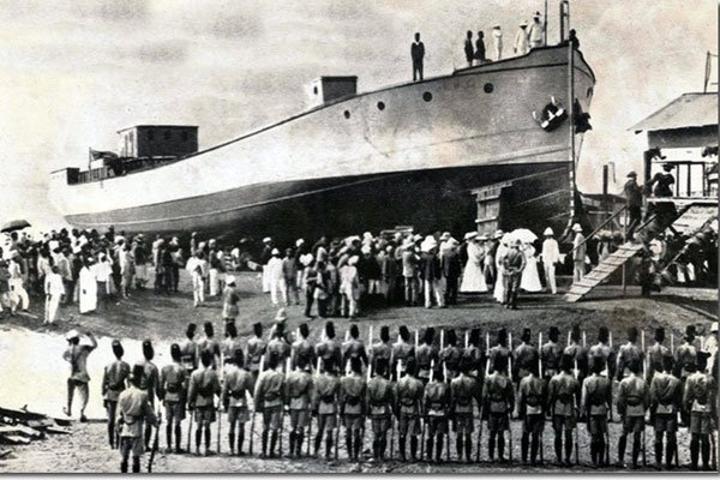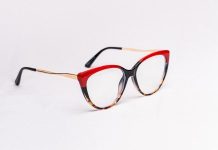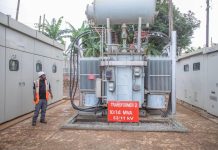Africa-Press – Uganda. Water transport is one of man’s oldest inventions. In the case of Uganda, people staying around water bodies for centuries improvised means of navigating the waters.And for unknown reasons, India’s role in the evolution of Uganda’s transport system has been underestimated.
Not only did they build the Uganda Railways, but India provided the second-hand rail slippers and wagons that started the railways system. Through the British Indian Steamship Company, steam ships were introduced on Lake Victoria.
In the late 1880s, the British owner of the Bombay-based British Indian Steamship Company, Sir William Mackinnon, ordered the construction of steamships for East Africa.Prior to this, coming into the interior of East Africa was by trekking, while goods were transported by porters on their heads.
First steamer ship“The first of these was a stern wheel paddle steamer. It was dispatched in knocked-down form to Mombasa. The second was a 70-ton single-screw steamer, specially designed with overland transportation to Lake Victoria,” Ian H. Grant writes in The Empire.
The packaging cases for the 70-ton single-screw steamer called SS Mackinnon stayed in Mombasa for five years after the company meant to put it on Lake Victoria went bankrupt.When the British government agreed to establish Uganda Railway, they purchased the knocked down steamship for the newly created Uganda Railways.
“It was purchased by the agents of the British government on behalf of the Uganda protectorate administration. At that time the colonial administration badly wanted to have a steam ship on the waters of Lake Victoria as the easiest way to ease transport to the East African coast,” Grant writes.
The ship had 3,000 parts and packages which were to be transported to Lake Victoria across Kenya. Before the parts could be put together for sail on Lake Victoria, there was need for the establishment of a dockyard.
Within the 3,000 packages were tools and equipment essential for establishing a dockyard. But some never made the journey as Grant explains.
Latest addition: The 300-seater MV Sigulu made its maiden expedition to the isolated island district of Namayingo in August 2020. Photo | watermota.co.uk
“These were earmarked for earliest dispatch, and some hundreds did start on the precarious journey, but many of them stopped far short of their final destination when the human or animal bearers expired or deserted. Some eventually reached Port Victoria, where Nzoia River enters the north of the lake close to the present day boundary between Kenya and Uganda,” he writes.
“Having purchased the steamer ship, the British foreign office was oblivious to the challenges of having the parts transported to Lake Victoria and have them assembled. Three shipbuilders from The Clyde were engaged and sent to Mombasa. They were under contract to the Uganda Protectorate for the purpose of putting together the SS William Mackinnon on Lake Victoria. The senior engineer was Richard Dick Grant and his assistants were Robert Brownlee, iron fitter, and John MacMillan, carpenter.”
Almost three years after the parts arrived in Mombasa, on June 4, 1900, SS William MacKinnon was launched on Lake Victoria. Her maiden voyage was from Port Victoria to Entebbe, the government seat.When World War I broke out in 1917, SS MacKinnon was turned into a gunboat and patrolled Lake Victoria against the Germans in Tanganyika, present day Tanzania.
It only resumed her passenger and cargo travels after the war. In 1929 SS MacKinnon reached the end of her working life when she was withdrawn from service, taken out into deep water and destroyed.Having established the Uganda Railways, the Foreign Office established a committee they called “the railway committee” which in 1901 ordered the construction of three other steam ships for the Uganda Protectorate administration.
They were SS Winifred and SS Sybil, the sisters as they were called, and SS Clement Hill. Their design and construction were put under the supervision of Sir EJ Reed, a naval architect.SS Winifred was launched in February 1903 and her sister a year later. They had a speed of 10knots with restricted cargo since they had to carry a lot of wood to fuel them, While SS Clement Hill was launched in 1907.
“They were handsome vessels with comfortable cabins for a dozen first-class passengers, large cool saloons and dining rooms, electric light, canopies and mosquito screens, and excursions on the lake became a highly desirable diversion,” writes Grant.It was SS Clement Hill that brought British secretary of state for colonies, Winston Churchill, to Entebbe.
In My African Journey, Churchill described his ride: “I woke the next morning to find myself afloat on a magnificent ship. Its long and spacious decks are as snowy as those of a pleasure yacht. It is equipped with baths, electric light, and all modern necessities. There is an excellent table, also a well-selected library. Smart blue-jackets with ebony faces are polishing the brasswork, dapper white-clad British naval officers pace the bridge.
SS Winifred (above) was launched in February 1903 and her sister SS Sybil a year later.
“We are steaming at ten knots across an immense sea of fresh water as big as Scotland, lifted higher than the summit of Ben Nevis. At times we are a complete circle of lake and sky, without a sign of land… the air is cool and fresh and the scenery splendid, and yet our route crosses the equator.”Just like SS MacKinnon, the two sister steamers Winifred and Sybil were turned into gunboats and patrolled the British part of Lake Victoria during World War I.
By 1908, the railways committee had ordered the construction of three more steamers. These included Nyanza, Rusinga and Usoga.Each of these was more than 1000 tons. At the time of their entry in 1913, the authorities in London had decided to have all the vessels on Lake Victoria converted from steam to oil firing.
Writing in Death of a Fleet at Kisumu McCrow Malcolm says water transport in the colony was not only reserved for Lake Victoria but also other water bodies in the Uganda Protectorate.“In addition, there were tugs, lighters, dredgers and stern-wheel paddle steamers on the Nile lakes of Kioga and Albert. The Uganda Protectorate named their craft after the famous explorers of the country, Lake Albert having the Samuel Baker, and Lake Kioga the Speke, Stanley and Grant,” Malcolm writes.
The two sisters Winifred and Sybil ended their service under the East African Railways and Harbours Corporation in the 1930s and 1960s respectively.“In 1936, the East African Railways and Harbours Corporation scuttled her (Winifred) and her remains were scrapped in 1954. While Sybil was destroyed in 1967 and the East African Railways and Harbours Corporation scuttled her at Kisumu,” Malcolm writes.Usoga and Rusinga entered service as military steamers during World War I. But after the war they turned into passengers steamers.
They had two weekly services around the lake. Rusinga started from Port Bell in Uganda going to Kisumu, Musoma, Bukoba and Mwanza where it arrived on Mondays, while Usoga commenced from Kisumu going in the opposite direction of Rusinga. The passenger cabins were divided into three classes. The first and second class were mostly for the Whites, while the Africans travelled in the third deck which sometimes was used as a cargo holding area.
According to McCrow Malcolm, she was finally put to rest in the 1990s. “In 1975 the East African Railways and Harbours Corporation laid her up at the Lake Victoria Port of Kisumu and in the 1990s she sank at the quayside,” he writes.While Rusinga, which had entered service at the same time with Usoga, was first damaged in 1927 when it caught fire and withdrawn from service, in 1966 it managed to return into service under private ownership.
HistoryVessels
Other vessels that were introduced in 1925 on the Ugandan waters included two tugboats, SS Buganda and SS Buvuma, which went out of service in the 1980s. After the breakup of the East African Railways and Harbours Corporation and the creation of Uganda Railways Corporation, three vessels; MV Pemba, MV Kaawa, and MV Kabalega graced the waters of Lake Victoria with the Uganda flag.






